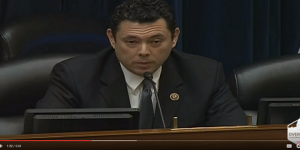USCIS —
Deferred Action for Parental Accountability (DAPA), which is expected to begin in six months. The actions also expand a 2012 program that offers relief to undocumented young people who came to the country as children, called Deferred Action for Childhood Arrivals (DACA).
On November 20, 2014, the President announced a series of executive actions to crack down on illegal immigration at the border, prioritize deporting felons not families, and require certain undocumented immigrants to pass a criminal background check and pay taxes in order to temporarily stay in the U.S. without fear of deportation.
These initiatives include:
Expanding the population eligible for the Deferred Action for Childhood Arrivals (DACA) program to young people who came to this country before turning 16 years old and have been present since January 1, 2010, and extending the period of DACA and work authorization from two years to three years
Allowing parents of U.S. citizens and lawful permanent residents who have been present in the country since January 1, 2010, to request deferred action and employment authorization for three years, in a new Deferred Action for Parental Accountability program, provided they pass required background checks
Expanding the use of provisional waivers of unlawful presence to include the spouses and sons and daughters of lawful permanent residents and the sons and daughters of U.S. citizens
Modernizing, improving and clarifying immigrant and nonimmigrant programs to grow our economy and create jobs | Details
Promoting citizenship education and public awareness for lawful permanent residents and providing an option for naturalization applicants to use credit cards to pay the application fee
1. Deferred Action for Childhood Arrivals (DACA) program
Who Current DACA recipients seeking renewal and new applicants, including individuals born prior to June 15, 1981, who meet all other DACA guidelines.
What Allows individuals born prior to June 15, 1981, to apply for DACA (removing the upper age restriction) provided they meet all other guidelines. Requires continuous residence in the United States since January 1, 2010, rather than the prior requirement of June 15, 2007. Extends the deferred action period and employment authorization to three years from the current two years.
When Approximately 90 days following the President’s November 20, 2014, announcement.
How Go to the Consideration of Deferred Action for Childhood Arrivals (DACA) page for instructions which will be updated over the next several months. Subscribe to this page to receive updates by email.
2. Deferred action for parents of U.S. citizens and lawful permanent residents
Who An undocumented individual living in the United States who, on the date of the announcement, is the parent of a U.S. citizen or lawful permanent resident and who meets the guidelines listed below.
What Allows parents to request deferred action and employment authorization if they:
Have continuous residence in the United States since January 1, 2010;
Are the parents of a U.S. citizen or lawful permanent resident born on or before November 20, 2014; and
Are not an enforcement priority for removal from the United States, pursuant to the November 20, 2014, Policies for the Apprehension, Detention and Removal of Undocumented Immigrants Memorandum.
When Approximately 180 days following the President’s November 20, 2014, announcement.
3. Provisional waivers of unlawful presence
Who Undocumented individuals who have resided unlawfully in the United States for at least 180 days and who are:
The sons and daughters of U.S. citizens; and
The spouse and sons or daughters of lawful permanent residents.
What Expands the provisional waiver program announced in 2013 by allowing the spouses, sons or daughters of lawful permanent residents and sons and daughters of U.S. citizens to get a waiver if a visa is available. There may be instances when the qualifying relative is not the petitioner.
Clarifies the meaning of the “extreme hardship” standard that must be met to obtain a waiver.
When Upon issuing of new guidelines and regulations.





























Speak Your Mind
You must be logged in to post a comment.